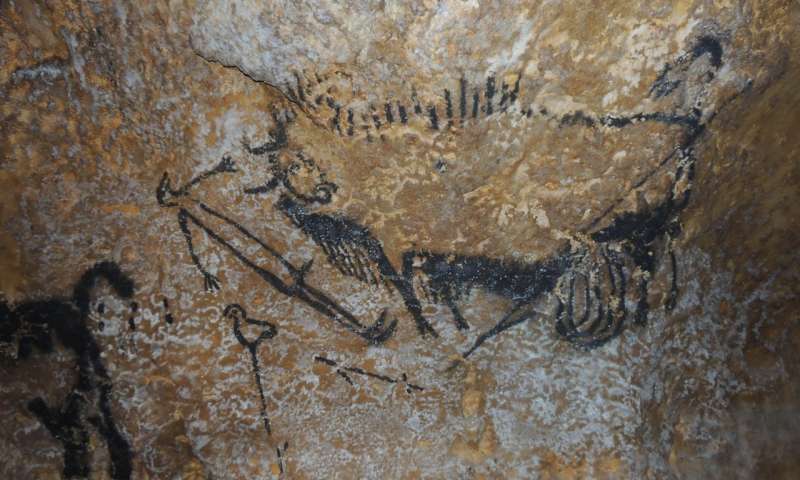This is an interesting link to a new study that will not be received with universal enthusiasm by mainstream but it has been published in a big name journal – go to https://phys.org/print462547301.html … some of the world's oldest cave art has revealed how prehistoric people had a relatively informed knowledge of the sky and the movements of the stars and other cosmic bodies. Of course, it is all down to an interpretation of the cave art – and they are not the first by a long chance to say a connection between the sky and cave art exists. It may even explain why humans ventured so deep into the bowels of the Earth – but that is a matter of opinion. Although the press release seems to indicate an infallible decoding of cave art one has to be sceptic as no doubt another study will come along and disclaim their findings.
Basically, they are saying cave art is not a simple depiction of animals roaming the outside world (above the caves) as previously assumed, a sort of sympathetic magic of the hunter/prey psyche. They are instead, it is claimed, symbolic representations of star constellations in the night sky. I'm not against such an interpretation but have they proved their point. Further, they go on to say the animal representations were used to date and mark events such as comet and meteor encounters.
 … As far back as 40,000 years ago humans kept track of time using the knowledge of the positions of the stars as they change over thousands of years – the gradual shift of earth's rotational axis. One thing is to recognise that something important was associated with certain star clusters but it seems it is going too far to suggest these paintings were like a clock – and people were aware of the precession of the equinoxes.
… As far back as 40,000 years ago humans kept track of time using the knowledge of the positions of the stars as they change over thousands of years – the gradual shift of earth's rotational axis. One thing is to recognise that something important was associated with certain star clusters but it seems it is going too far to suggest these paintings were like a clock – and people were aware of the precession of the equinoxes.
Around the time the Neanderthals became extinct this all kicked off, they seem to imply (again, not necessarily wrong but on what basis are they saying that). They also say this pertains also to the animal symbols found on the stones at Gobekli Tepe (which is not universally accepted, however nice an idea it might be). Anyway, full marks to the researchers from the University of Kent and the University of Edinburgh for a geographical spread of the data – from Turkey to Spain, France and Germany. They compared cave art with the positions of the stars in ancient times (as predicted by software programmes). The idea behind it all was brilliant and hopefully it will be taken seriously by mainstream anthropologists and the connoisseurs of prehistoric art
